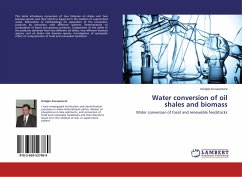
Investigating the Use of Shales in the Drilling Industry
Versandkostenfrei!
Versandfertig in 1-2 Wochen
30,99 €
inkl. MwSt.

PAYBACK Punkte
15 °P sammeln!
Shales form a large part of the underground formations of oil and gas reservoirs. Chilean constituents swell and collapse when exposed to the aqueous phase of water-based drilling fluids because they contain active clay minerals such as smectite. This causes the wall of the well to collapse and widen, leading to the drilling string getting stuck and the drill biting during drilling. This also causes drilling rigging tools to be driven into the well. For this reason, drilling engineers have always sought to reduce the swelling of these types of structures, and as a result have resorted to the u...
Shales form a large part of the underground formations of oil and gas reservoirs. Chilean constituents swell and collapse when exposed to the aqueous phase of water-based drilling fluids because they contain active clay minerals such as smectite. This causes the wall of the well to collapse and widen, leading to the drilling string getting stuck and the drill biting during drilling. This also causes drilling rigging tools to be driven into the well. For this reason, drilling engineers have always sought to reduce the swelling of these types of structures, and as a result have resorted to the use of oil-based fluids, which, despite being expensive, have severe destructive effects on the environment and aquifers. Another type of drilling fluid that drilling engineers consider is salt drilling fluid. These types of fluids contain monovalent salts (such as sodium and potassium chloride) or divalent salts (such as calcium and magnesium chloride).












